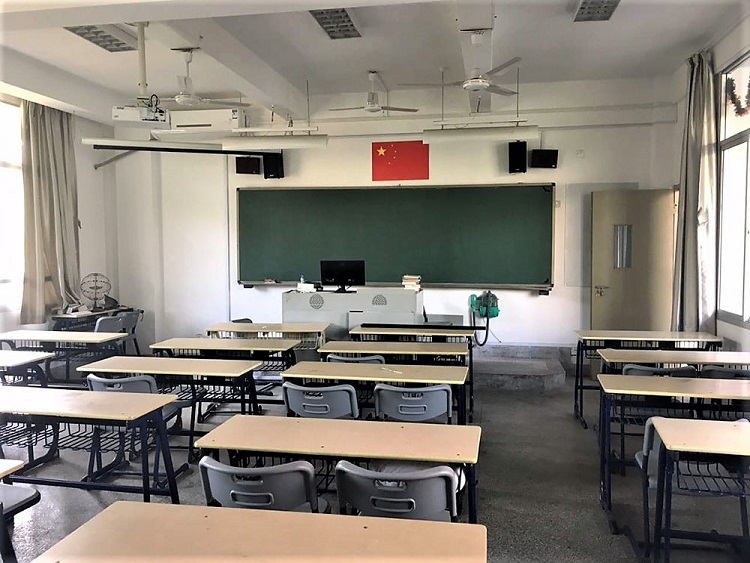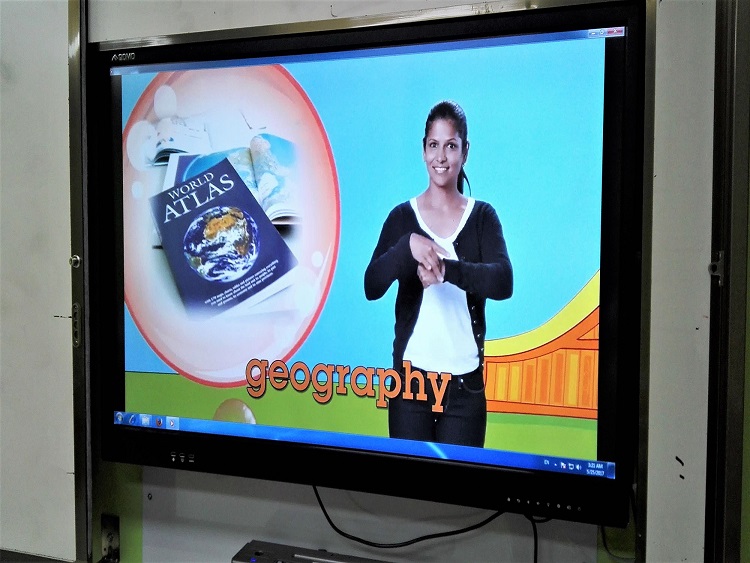For many of us, we can remember the sound of chalk scraping along the blackboard. The teacher, almost a dictator, would rarely venture more than an arm’s length away from their main teaching aid.
In an ESL classroom in China, the environment should always be student-centered rather than the teacher being the focal point. But in a class of students whose second language is English, how can we turn students from being passive spectators into active participants?
To be a sponge or an archaeologist
A traditional classroom would see the teacher at the front imparting knowledge on a room of sponges, hopefully soaking up that knowledge. But acquiring a second language isn’t like learning a regular subject.
A student-centered classroom is like a room of archaeologists digging to find knowledge. The teacher is more of a resource on the sideline giving guidance and encouraging students’ curiosity.
Shifting from a traditional to a modern style of teaching in China
Teaching English in Fuzhou has given me the chance to experience three different types of classrooms: the ‘green’ board and rainbow selection of chalk, the whiteboard with black and red markers, and a combination of a digital board with a sliding whiteboard.
I can remember my first day of teaching in China. I didn’t let go of the marker and I could feel eyes on my back as I was often left facing the whiteboard and not at my students. This had to change, sooner rather than later.

A traditional classroom set-up in China.
I let technology slowly filter into my classroom. Phones were being used for translation and to bring up images of topics that came into discussion, but this was still limiting and not generating the kind of output I wanted.
Going digital in China
Finally the day came where my classroom in Fuzhou became digital. The whiteboard wasn’t fully replaced; we had a fixed whiteboard and a sliding whiteboard over the digital screen.
I essentially gave my students the fixed whiteboard. This was for them to brainstorm during class and communicate ideas. I had the sliding whiteboard and we shared the digital screen.
Having a digital board allowed me, as the teacher, to guide the students’ direction of discovering answers for themselves through live research in the classroom. This would lead to discussions and debates with informed knowledge, giving the students confidence to go beyond the easy response to questions.
A more modern classroom in China with digital board and sliding whiteboard.
A digital board also meant having an online dictionary to translate words, from Chinese to English, which students hadn’t acquired through the curriculum but were necessary for the topic that they were contributing to.
SEE ALSO: WHEN THE STUDENTS CONTROL THE CURRICULUM
Effective use of a digital board
Having a digital board didn’t change the set curriculum I had to teach but it completely changed the way I taught. In a 90-minute class, the first 60 minutes would be taught without books.
In the language center in Fuzhou where the majority of my teaching experience was spent, there is a focus on covering the material set out in the plans and ensuring you meet the teaching objectives. This to me felt very teacher-led and I wanted to move forward with focusing on the learning outcomes of the students.
A digital classroom strikes a perfect harmony. You can introduce the teaching objectives of the day in a way that is more fluid and flexible through showing video clips and presentations. Or you can provide a topic and have students research in the classroom and present their findings.

A student in China presenting in front of a digital board.
The final 30 minutes of the class is where I’d bring in the books and meet the criteria that was required of me. Ten minutes of these 30 minutes would be making notes of all the new words learnt that day and reusing them in sentences for students to summarize what they had achieved from the day’s lesson.
Managing planning time for a digital classroom in China
Planning for a digital classroom in China while still needing to create a hardcopy written plan can be daunting when you first make the transition. One thing I did was change how I created resources.
When my classroom was more teacher-led I had to create a lot of worksheets to compliment the curriculum which was, quite frankly, lacking in stimuli. Having a more flexible classroom meant having blank paper available for students to create their own tasks.
The internet provides a wealth of digital resources available for a teacher in China. Or, for a personal touch, you can make your own videos using your laptop or GoPro!
Just remember, any time spent finding or making a resource should mean that you save and organize all these files so that they are readily available for future use.
SEE ALSO: USING MOVIES IN YOUR ESL CLASSROOM IN CHINA
Making my own classroom objectives
As a guide to myself I started making my own classroom objectives to write alongside those I needed to fulfil on the plan. This was a reminder for me but also a justification of why I was instructing the class this particular way to my employers.
In a public school in China, this is less of an issue but not a bad idea for your own benefit. Teaching in a training center in China, however, can sometimes be a battle in getting past the plan and finding freedom in the classroom.
The main objective I had in every lesson was to ensure the students did more talking than I did. I was there to give direction on their learning but I wanted my students to actively create the classroom environment.
Another personal objective was to let the students play a part in what we learnt in class. This often included me showing visuals related to a topic and the students deciding the context they wanted to use the visuals in.
Whatever the objectives you decide for yourself, trust me when I say that a digital classroom will allow the fulfilment of most likely all of them. And if you ever come across a lesson that you haven’t planned for or is just not working out, there is nothing like giving students free rein of the internet!
Have you moved from a traditional classroom to a digital one? Please share your story below.






